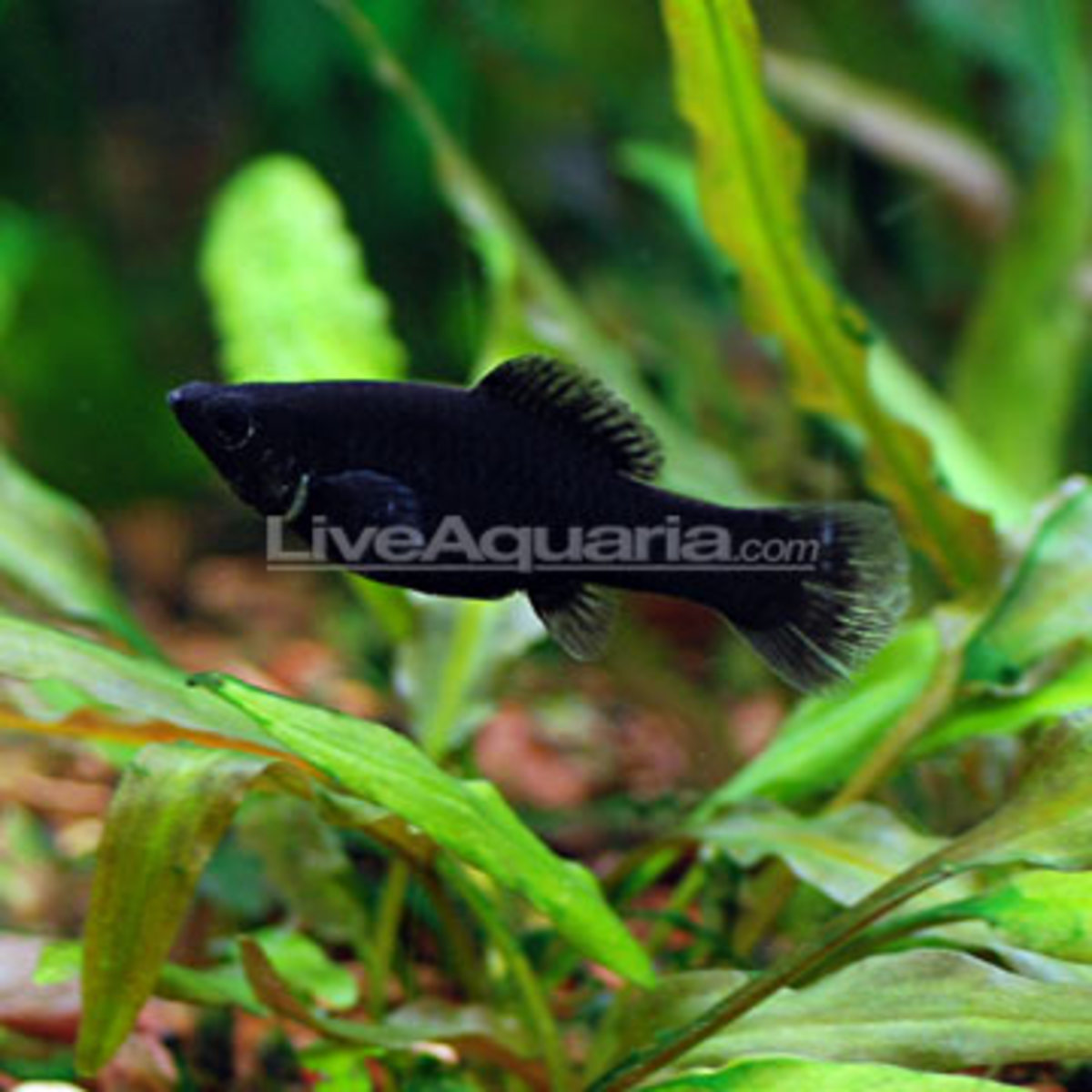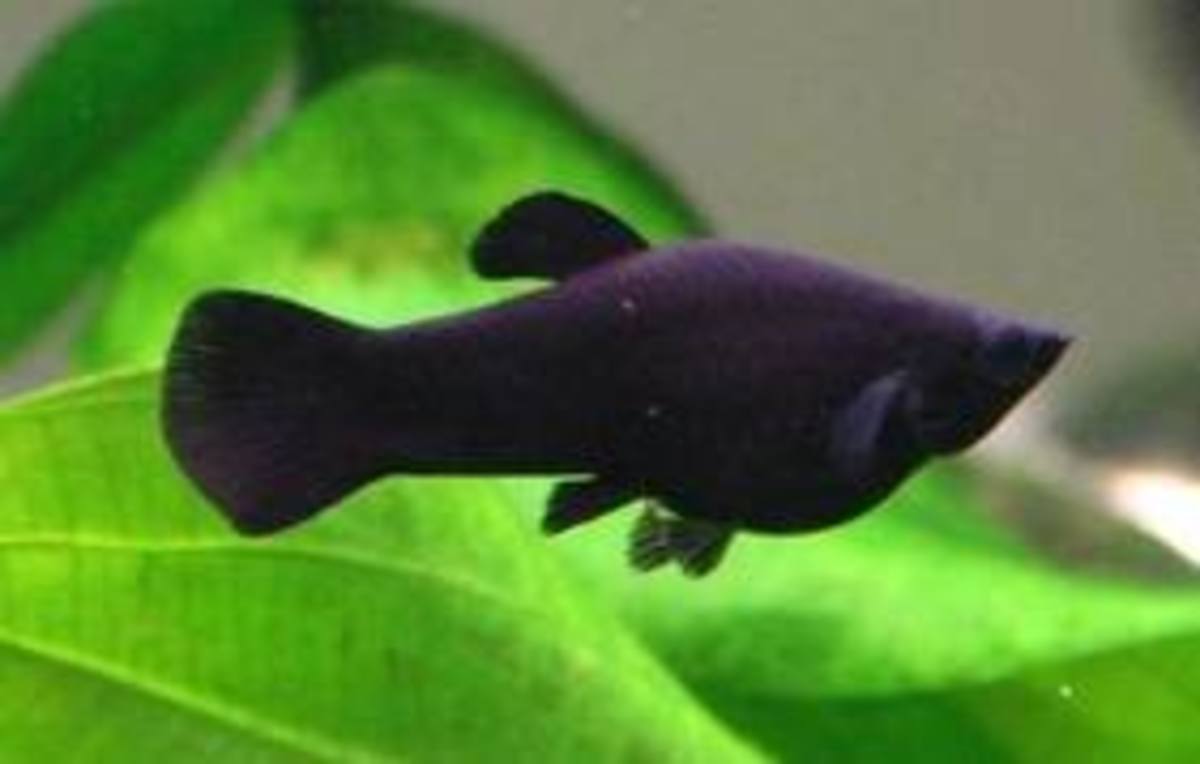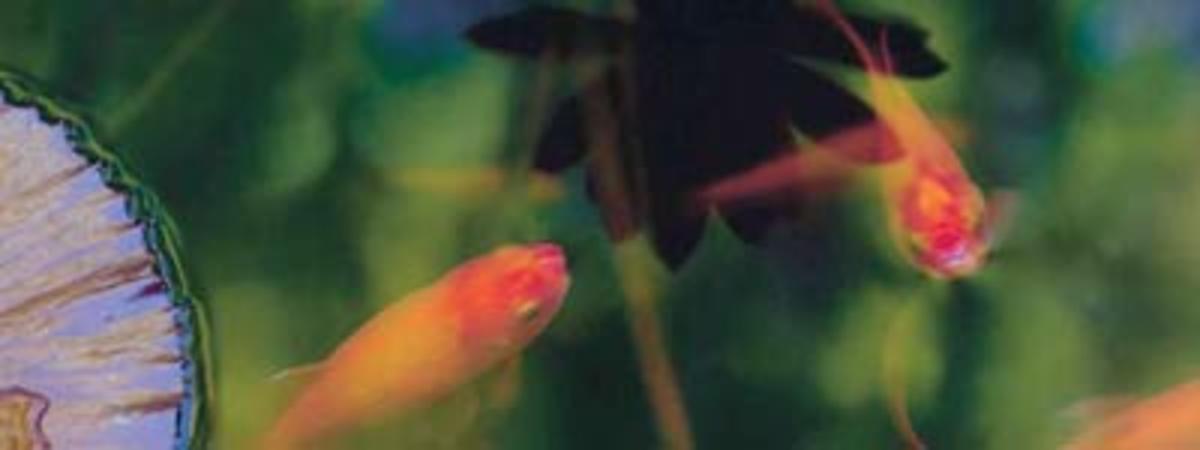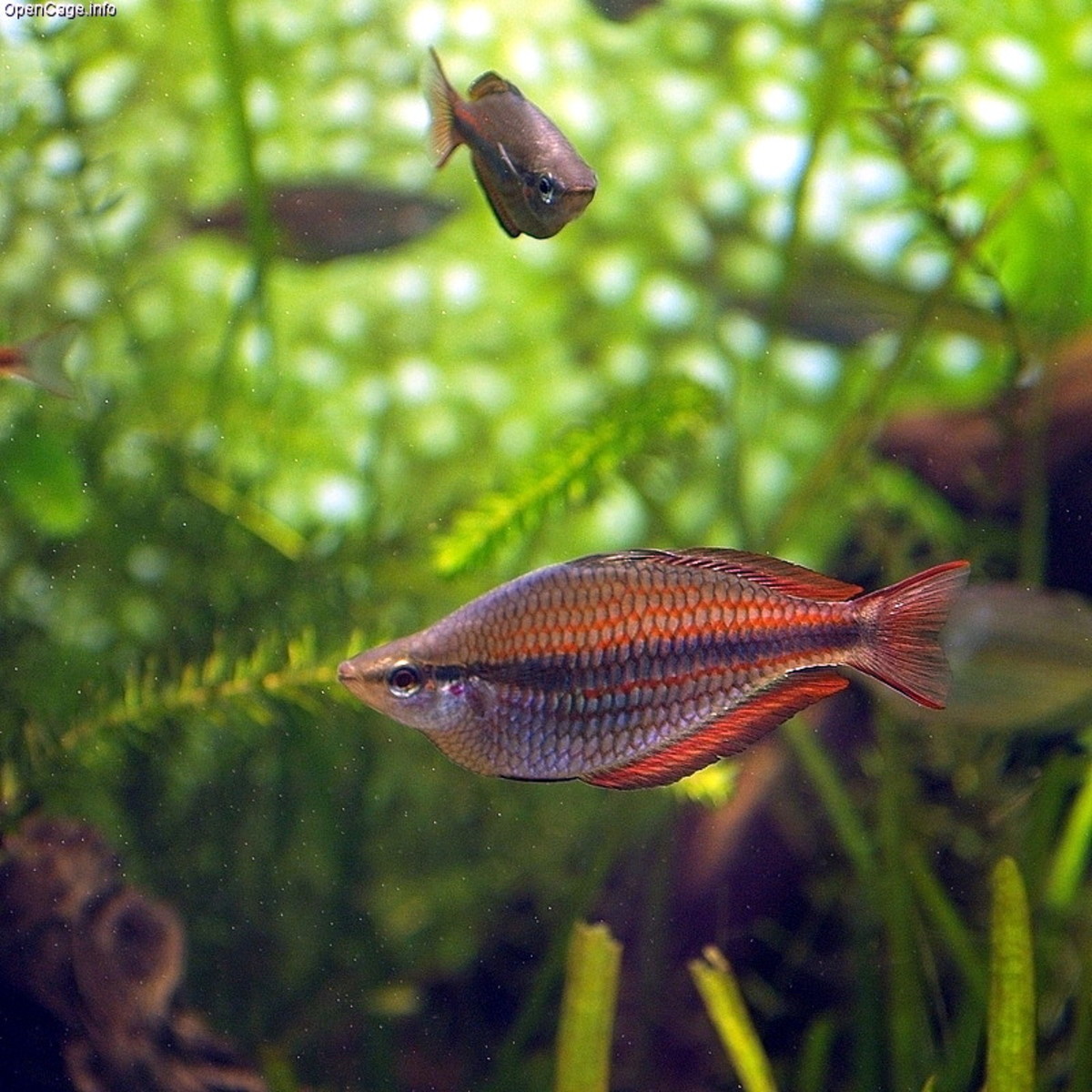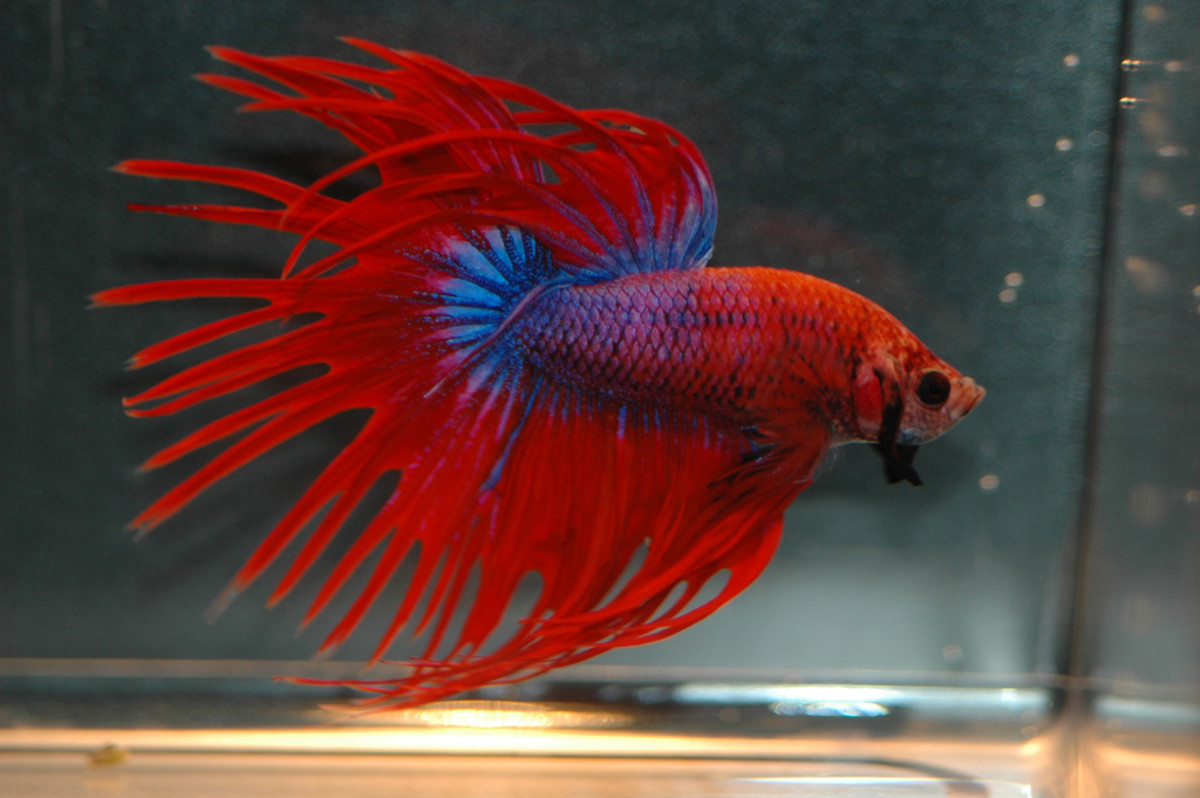- HubPages»
- Pets and Animals»
- Tropical Fish & Aquariums»
- Freshwater Aquarium Animals
Livebearers - tropical fish that get pregnant
Fish that give birth
Livebearers, or live-bearers as it is also written, are a large group of mainly freshwater tropical fish in the Poeciliidae. They are technically speaking live-bearing tooth-carp but what stands out about them all is the ability they have to give birth to ready-formed living young.
Unlike most fish which lay eggs that have to be incubated for a period of time before they hatch, livebearer fry can swim and feed for themselves as soon as they are born.
This makes it much easier to look after live-bearers because the babies are born much bigger and so are easier to feed on larger types of food. The fish are usually very easy to breed as well so make ideal fish for a beginner at tropical fish keeping.
Male livebearers have a specially adapted fin called a gonopodium with which they fertilise the females of their species internally.
The most commonly kept types of live-bearing fish are guppies, platies, swordtails and mollies.
Guppies
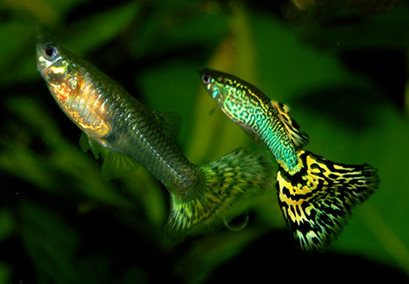
The Guppy
The Guppy (Poecilia reticulata) is probably the most commonly kept and widely known tropical fish in the world. The males, although small, are very brightly coloured and come in all sorts of fancy varieties.
Guppy males reach no more than 1.4 inches compared with the much larger females that can reach 2.4 inches. They make up for their small size with flowing tails and iridescent rainbow colours.
Guppies are found in the wild in Trinidad, where they were fist discovered, and also in Antigua, Barbuda, Barbados, Brazil, Netherlands Antilles, Tobago, U.S: Virgin Islands and Venezuela. They have also been introduced as mosquito control in many other countries.
Fancy guppies come with extravagant finnage and large flowing tails. There are named varieties such as the veil tail, flag tail and lyre tail. There are colour varieties too such as black guppies and golden guppies.
Only the males used to display any colouration or fancy fins but nowadays there are females with large colourful tails too. The Guppy has been submitted to many years of selective breeding by guppy-enthusiasts and breeders.
Guppies tolerate a lot of conditions well, including brackish water. They are very easy to keep and ideal for a community tank. They are often thought of as tropical fish for beginners.
Female guppies show a dark "gravid spot" on the bottom part of their bellies and they get progressively fatter until they literally drop their babies. In a tank with plenty of plants the babies will hide away but to make sure that mother Guppies don't eat their young they are often put into floating breeding traps which allow the fry to fall through slots at the bottom of the container and thus become out of range of their mother should she turn cannibalistic.
How Guppies Are Born - "Big Mama" guppy giving birth
The Molly
There are various species of Mollies and hybrids between them. The Sailfin Molly (Poecilia latipinna) is one of these and gets its name from the distinctive high and wide dorsal fins of the males. They also have large tail fins. Like other species of mollies it used to be under the scientific name of Mollienesia.
Sailfin Mollies are found in the wild in the subtropical Southern States from North Carolina to Texas, Florida and the Yucatan Peninsula of Mexico. They live in brackish water as well as fresh and are often found around the coasts in marshes and estuaries. Sailfin Mollies can also live in the sea and populations are found in freshwater, brackish and marine habitats.
The natural colour is mainly a grey with a greenish-blue sheen on the males. They grow to around 4 inches or more and with their large sailfins are an impressive looking fish which has made them popular with tropical fish enthusiasts. There are several varieties that have been produced by selective breeding including black and albino Sailfin Mollies.
There is also a smaller Black Molly or Midnight Molly (P. sphenops) which is jet black all over and comes in a lyre-tailed variety and deformed breed known as the "Balloon Molly." Another species is the Yucatan Molly (P.vellifera). All these species will hybridise.
Mollies like a lot of vegetable matter in their diet but will take flake food. They are often kept in community tanks.
Depending on the age and size of female Sailfin Mollies from 10 to 140 babies can be produced in one go.
Sailfin Molly
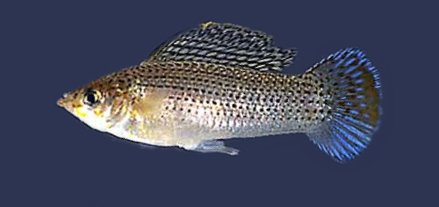
The Swordtail
The Swordtail (Xiphophorus helleri) is an attractive and very popular livebearer that comes originally from Mexico. It gets its name from the sword-like extension on the tail-fins of the males.
Male Swordtails reach a length of around 5 inches and females can grow an inch longer. The wild form is known as the Green Swordtail and is primarily an olive-green but also has a reddish or brown stripe in the middle of its body and a black stripe edging the sword on the tails of the males.
Selective breeding in captivity has produced a multi-coloured range of Swordtails including black ones, red Swordtails and the attractive Wagtail Swordtails with black fins that contrast with the red or other body colouration.
Swordtails are very closely related to the Platy (X. maculatus) and has been hybridised with this fish to increase the colour variations available. Swordtails are often kept in community tanks.
Halfbeak
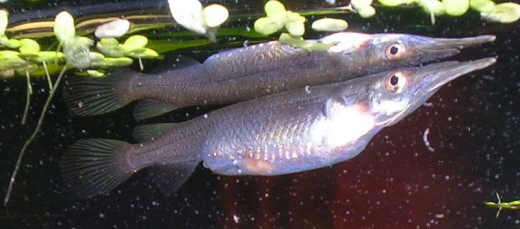
Limia, Halfbeaks and Dwarf livebearers
There are various other livebearers that are not as often seen as the species already described. Limias come from the Greater Antilles Islands and there are some 22 species described. There are endemic species in the Cayman Islands, Cuba and Jamaica.
The Limias are not as colourful as the more popular livebearing fish and are more often kept by more advanced tropical fish keepers.
Freshwater Halfbeaks (Dermogenys species) are very interesting livebearers atht unlike all the other types so far described are not in the Poeciliidae.
Both males and females have much longer lower jaws and hence their name "Halfbeak." Males tend to be a bit more colourful than the dowdy females and are also aggressive with other males. The species D. pulsilla is known as the Wrestling Halfbeak.
These odd looking live-bearing fish that grow to a couple of inches in length are found in Southeast Asia in India, Indonesia. They live at the water's surface where they hunt for live food and insects that have fallen into the water.
The Dwarf Livebearer or Least Killifish (Heterandria formosa) was once also known as the Mosquito Fish but this term is usually used for the much larger Gambusia species. The Dwarf Livebearer is one of the smallest fish in the world with males only reaching about 2 cm and females 3.
The Dwarf Livebearer comes from the Southern States of North America and is found in South Carolina, Louisiana, Georgia and Florida. It lives in swamps, ditches and ponds.
It is mainly an olve-brown colour with a horizontal black line down its tiny body.
The Dwarf Livebearer is a very peaceful fish that due to its small size is best kept on its own. The parents will not eat their babies so there is no need for using breeding traps for this species. Unlike other livebearers the Dwarf Livebearer does not have all its young at the same time but spaces the births out over a period of 10-14 days..
The Platy
The Platy (X. maculatus) is a close relative of the Swordtail already described. It comes from Mexico and various Southern States on North America and naturalised populations exist in many places too. Its full name is the Southern Platyfish but this is usually shortened to Platy.
Platies grow to a maximum of around 2.4 inches but because the species hybridises readily with the Swordtail there are much bigger hybrids. Those in which the males have swords get classed as Swordtails and those without are Platies.
Platies are naturally a fairly drab greyish and silvery fish but they have been bred to be available in a fantastic colour range including blue, red, orange, gold and black. Red Wagtail Platies are very popular with their black fins and contrasting red bodies.
There is a separate species known as the Variegated Platy (X. variegatus). They are found in northeastern Mexico and reach a slightly larger size than the Platy. In the wild they are an olive background colour with some black marbling and spots. In captivity like the Swordtail and Platy they have been selectively bred to produce all sorts of variations and colours.
Platies are very easy to keep and breed and are ideal for beginners and for the tropical fish community tank.

